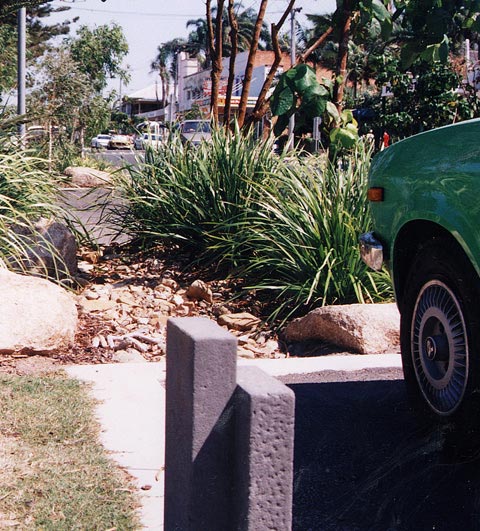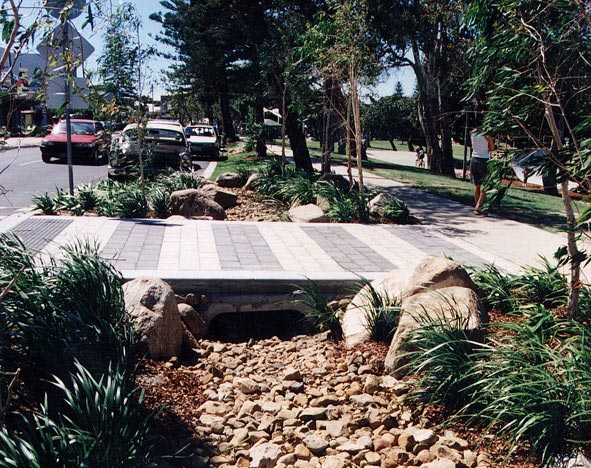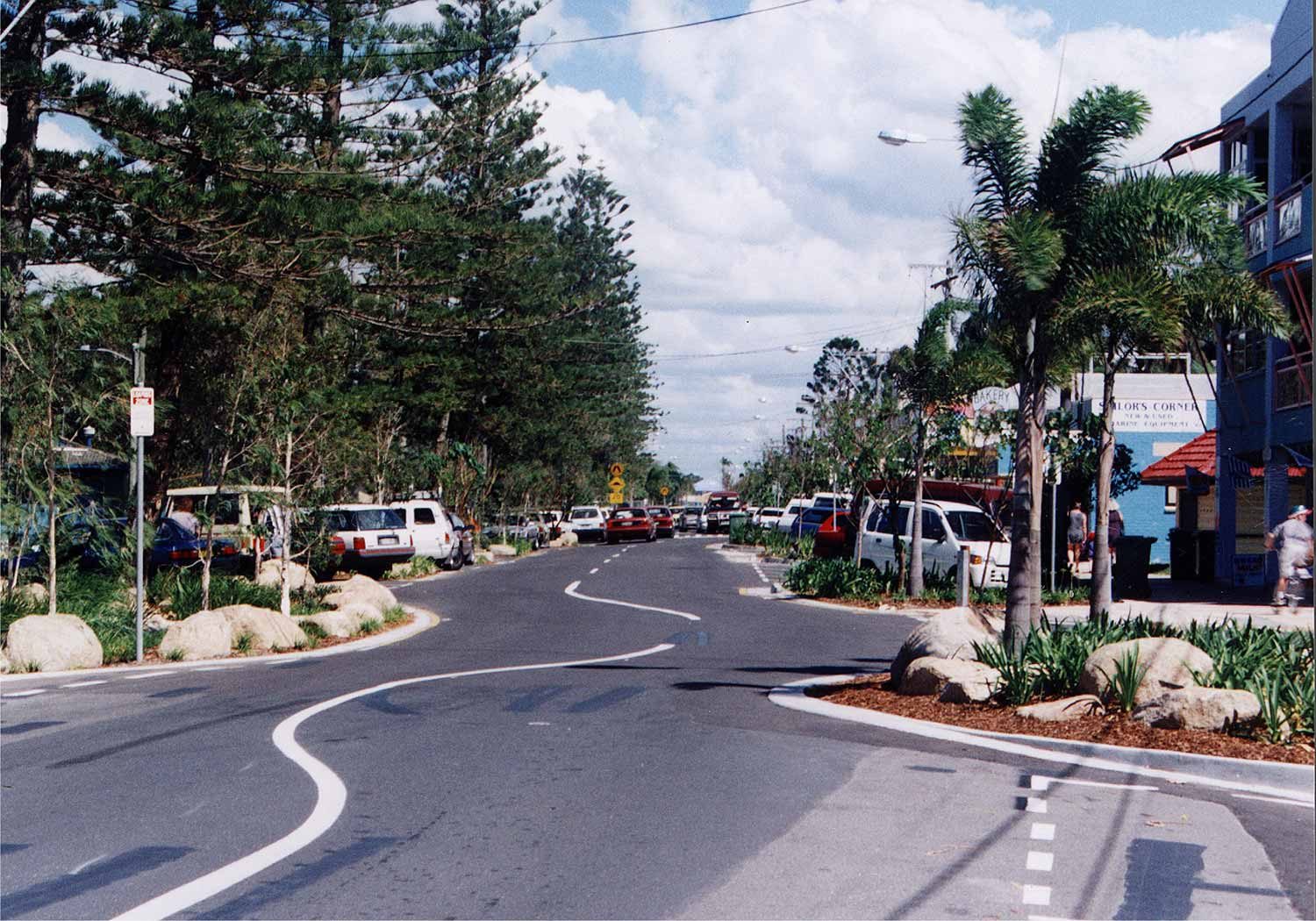The vast amount of water caught every day within our streets, car parks and footpaths is an unrecognised resource going to waste. In a country facing increasing pressure on its dwindling water resources, we should be recycling and harvesting these lost waters of our urban systems. In the town centre of Toowoomba we calculated once that only 3% of the total surface area of the CBD was not either sealed up by pavements or built upon with structures. Vast areas of our towns are ‘sealed up’ without regard for recycling the water back into the land or its natural systems. In the meantime, we pay to water the remainder of the areas with drinkable water.
This talk focuses on how we can sustainably design the streets and footpaths which people desire in the new millennium. Our research and workshops with the broader community throughout Australia shows that there is an overwhelming desire for ‘softer’ streets which incorporate grass or vegetated swales and which minimise street widths and kerb and channelling. This is particularly strong in rural and semirural places, and calls for an immediate strong shift in the types of road and infrastructure systems being built for these places.
Changing the Paradigm
Until probably the last ten years, a culture created by professional barriers dictated that the driveable parts of our landscapes were exempt from being considered part of the natural systems, which they sat upon. With increasing collaboration across the design, environmental and engineering disciplines, we can see the emergence of a more holistic approach to streets and urban pavements. This is increasingly an environmentally led process, which seeks to link culture, nature and infrastructure into seamless and interactive ecological systems.
The basic building blocks of streets and places are thus being questioned and rebuilt:
- How should roads and drain systems look like to fit into their environments?
- How should a surface for driving or walking be? Can it be permeable?
- How should a road drain? Where should it drain?
- What edges should be made? What is the best edge for the intended road?
- Do you need a kerb or a channel?
- Where will water go? How far should it travel? How will it be absorbed and cleaned? How can it be recycled?
In my own work as a landscape architect and urban designer, asking these questions has led to a quiet revolution in the projects which I’ve planned.
How should a road drain?
In the village of Scarborough in Redcliffe city, Queensland, we undertook a community-led scheme to retrofit the public esplanade and shopping area. An older population called for traffic calming as well as universal access through the village, and these goals merged with the desire to harvest and recycle stormwater. The ‘creative village’ project at Scarborough sought to do this in an artful manner, which would make it the creative hub of Redcliffe city.






